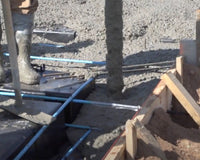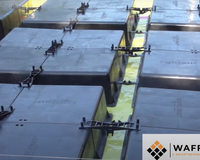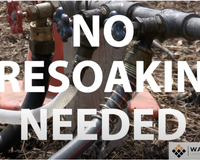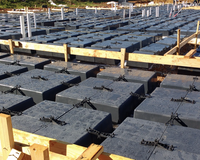The foundation design of any building is paramount for the longevity and durability of the structure. When determining the best option for your foundation design, there are several factors to consider. With proper planning and design, it is possible to build a stable and durable foundation on expansive soils.
Before beginning your foundation project, you should consider these 6 tips:

1. Conduct a soil test: The first step in designing a foundation on expansive soils is to contact a Geotechnical Engineer who will conduct a soils and seismic test to determine the soil's composition and characteristics. The Geotech Engineer will issue a report with their findings and will provide design values based on the soil's expansion and contraction potential, as well as its load-bearing capacity.

2. Consider the climate: The climate where the foundation is located is an important factor to consider. Factors such as freezing temperatures and rain conditions will affect the design of the foundation. Freeze-thaw cycles or excessive rain-drought cycles cause expansive soils to expand and contract. The variance in soil moisture is the primary reason that foundations experience excessive movement. The soils stresses impact the foundation which lead to stress cracks/failures .

3. Foundation Options –Deep Foundations: One traditional way to build a foundation on expansive soils is to use a deep foundation approach. This involves digging deep into the ground to reach stable soil layers that are less susceptible to expansion and contraction. Common types of deep foundations include piles, piers, and caissons. Choosing this type of foundation design is one of the most common methods for heavy load demands, however it is very costly and time consuming.

4. Foundation Options –Shallow Foundations: Based on the building dimensions and load requirements, a shallow foundation may be a feasible option. Some examples of shallow foundation designs are referred to as spread/isolated footings, strip foundations, mat or raft foundations, and traditional ribbed slab foundations. Shallow foundations are designed to “float” and move with the soil, which is also referred to as a “floating slab”. The foundation design should be rigid enough to withstand the soil pressures and minimize cracking. Wafflemat Foundation System is designed specifically for expansive soils with void forms to allow for the expansion of soils. Void form foundations offer a viable option that are designed to withstand the heave from expanding and contracting.

5. Don’t take shortcuts on drainage: Proper drainage is very important in expansive soils to prevent water from seeping into the foundation and causing damage. A drainage system that includes a perimeter drain, a sump pump, and a French drain can help prevent water from entering the foundation.

6. Hire an expert: Building a foundation on expansive soils is a complex and challenging task, so it's important to hire an expert who has experience designing foundations for this type of soil. An experienced foundation contractor or engineer can help ensure that the foundation is properly designed and built to withstand the unique challenges of expansive soils.
Contact an engineer today for a value engineering offering from Wafflemat.

Considering all aspects in the design is critical, but implementing the design intent is just as important. Careful planning and intent are essential for any successful project and choosing to work with the right design team can help make those challenging decisions easier.
Contact us today to help be part of your design team.





